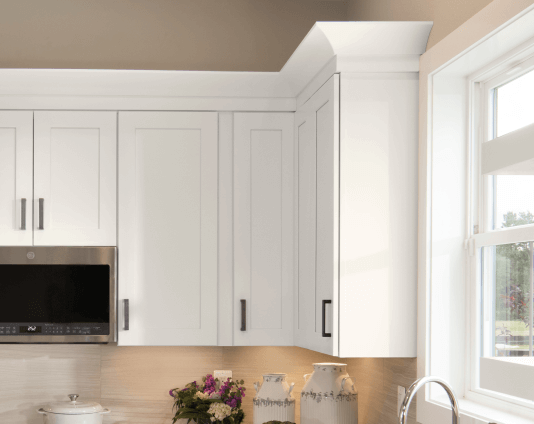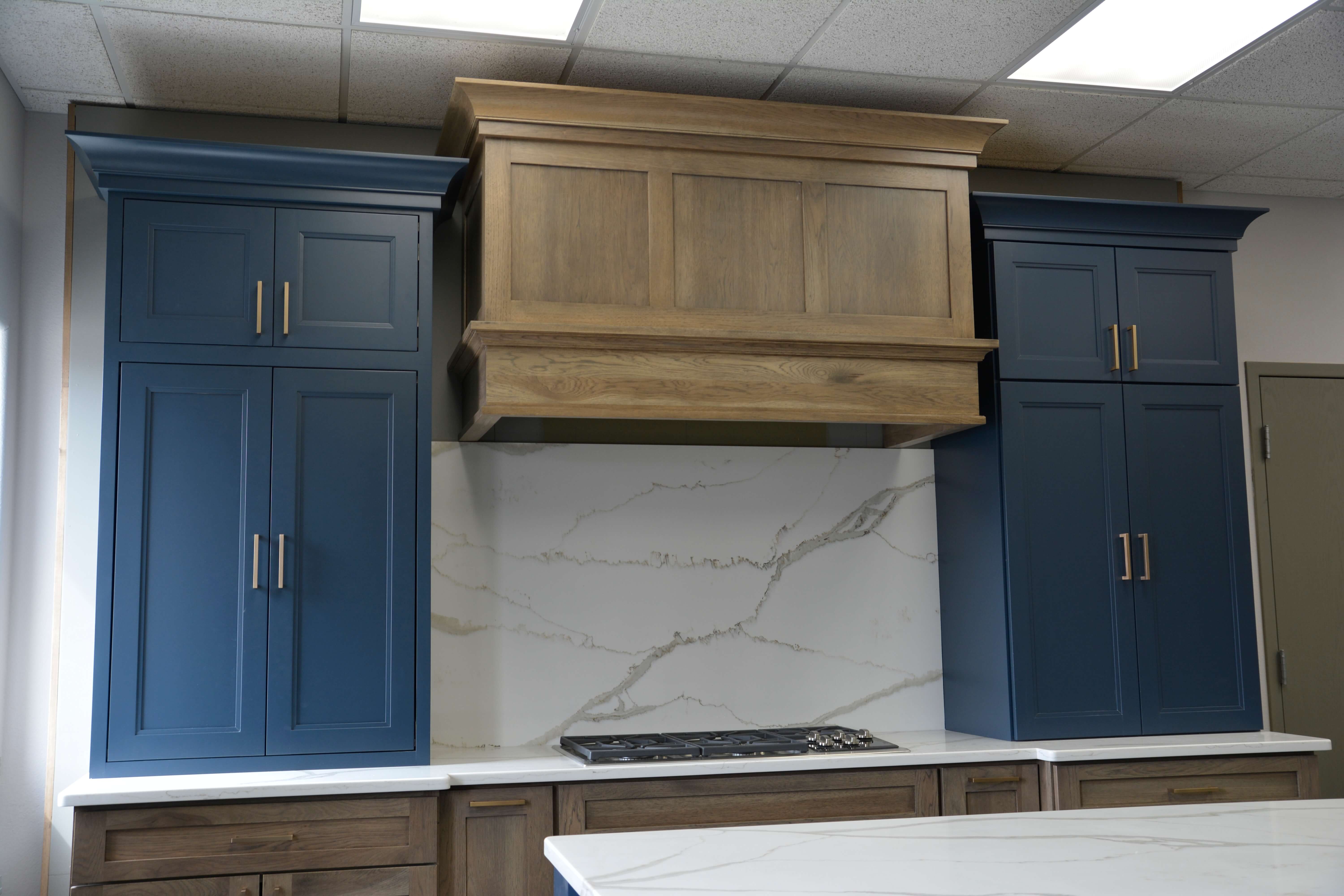When it comes to kitchen design, every detail matters. One of the subtle yet impactful elements that can elevate your kitchen space is decorative molding for kitchen cabinets. In my personal experience, adding decorative molding transformed my kitchen from bland to beautiful. In this article, we will explore the various types of decorative molding, their benefits, installation tips, and more, bringing your kitchen vision to life!
What is Decorative Molding?
Decorative molding refers to the ornamental trim used to enhance the aesthetics of cabinets and other furniture pieces. It adds depth, detail, and an air of sophistication to your kitchen. From crown molding to baseboards, the right molding can instantly upgrade your cabinetry.
Types of Decorative Molding for Kitchen Cabinets
Understanding different types of molding can help you choose the best fit for your kitchen design. Below are some popular options:
Crown Molding
Crown molding is placed at the top of cabinets, creating a seamless transition from the cabinetry to the ceiling. It is perfect for adding height and elegance.
Pros and Cons of Crown Molding
| Pros | Cons |
|---|---|
| Enhances visual impact | More challenging to install |
| Complements traditional decor | Can increase cleaning difficulty |

Base Molding
Base molding is used at the bottom of cabinets. It provides a polished look and helps protect against dirt and damage.
Pros and Cons of Base Molding
| Pros | Cons |
|---|---|
| Protects cabinetry | Choosing the wrong style can clash with decor |
| Easy to install | Can make the space feel smaller if too elaborate |

Accent Molding
Accent molding is a decorative strip that gives cabinetry a unique flair. It can be applied to the cabinet doors or along the edges.
Pros and Cons of Accent Molding
| Pros | Cons |
|---|---|
| Highly customizable | Can be overdone |
| Enhances design theme | Requires careful planning for placement |

Benefits of Decorative Molding for Kitchen Cabinets
Now that we’ve explored the types of decorative molding, let’s discuss the benefits that these elements bring to your kitchen design.
1. Aesthetic Appeal
Decorative molding instantly elevates the look of any kitchen. It adds a level of craftsmanship that makes your cabinets stand out.

2. Increased Home Value
Investing in decorative molding can potentially increase your home’s resale value, especially in the kitchen, which is often seen as the heart of the home.
3. Personalization
Every kitchen should tell a story. Decorative molding allows for personal expression, enabling homeowners to customize their kitchen to fit their unique style.

4. Improves Visual Flow
Molding can help create a cohesive look throughout your kitchen, linking cabinets with other elements like countertops and backsplash.
Choosing the Right Decorative Molding
With so many options available, how do you choose the right decorative molding for your kitchen cabinets? Here are a few tips:

1. Consider Your Kitchen Style
Think about your overall kitchen style—traditional, modern, farmhouse, etc. Select molding that complements the existing decor.
2. Material Matters
Common materials for molding include wood, polyurethane, and MDF. Each has its benefits and drawbacks regarding durability, cost, and maintenance.
3. Scale and Proportion
Ensure the size of the molding matches the scale of your kitchen. Larger kitchens can handle more substantial molding, while smaller kitchens may benefit from sleeker designs.
Installation Tips for Decorative Molding
Installing decorative molding can be a DIY project or a task for professionals. Here are a few tips if you decide to tackle it yourself:
1. Gather Necessary Tools
Make sure you have the right tools, including a miter saw, nail gun, and measuring tape. Having the right equipment is key for a clean installation.
2. Measure Accurately
Before you cut, measure carefully to avoid costly mistakes. Always measure twice and cut once!
3. Use the Right Adhesive
For heavier moldings, consider using an adhesive in addition to nails for extra support.
4. Sand and Paint
After installation, sand any rough edges and paint or stain the molding to match your cabinetry for a professional finish.
Maintenance of Decorative Molding
Keeping your decorative molding in top shape is crucial for long-lasting beauty. Here are some tips for maintenance:
1. Regular Cleaning
Dust and clean your molding regularly to prevent buildup. A soft cloth and mild cleaner usually do the trick.
2. Check for Damage
Inspect your molding occasionally for any signs of wear and tear, such as chipping or peeling paint. Address any damage promptly.
3. Repaint or Refinish as Needed
Over time, the finish on your molding may dull. A fresh coat of paint or stain can do wonders to restore its beauty.
Cost Considerations
The cost of decorative molding can vary significantly based on material, style, and installation. Here’s a basic overview:
Average Cost of Decorative Molding
| Type of Molding | Material | Cost per Linear Foot |
|---|---|---|
| Crown Molding | Wood | $4 – $10 |
| Base Molding | MDF | $2 – $6 |
| Accent Molding | Polyurethane | $3 – $8 |
FAQs About Decorative Molding for Kitchen Cabinets
1. What is the purpose of decorative molding?
The purpose of decorative molding is to enhance the aesthetic appeal of cabinetry, create a cohesive look, and add visual interest to the kitchen design.
2. How do I choose the right style of molding?
Consider your kitchen’s overall style, choose materials that complement your cabinets, and ensure the scale of the molding matches your kitchen’s size.
3. Can I install decorative molding myself?
Yes! Installing decorative molding can be a DIY project if you have the right tools and follow proper installation procedures. However, hiring a professional is also an option for a polished finish.
4. How do I maintain decorative molding?
Regular cleaning, checking for damage, and repainting or refinishing as needed will help keep your decorative molding looking fresh and beautiful.
Conclusion
Decorative molding for kitchen cabinets is a fantastic way to enhance the beauty and functionality of your kitchen. With careful planning and execution, you can create a stunning space that reflects your personal style and adds value to your home. Whether you choose crown molding, base molding, or accent molding, the right selection will turn your kitchen from a mere cooking space into a warm and inviting gathering area.
In my home, the addition of decorative molding has made a significant difference. I encourage you to explore the various options and see how they can elevate your kitchen to new heights. Happy decorating!